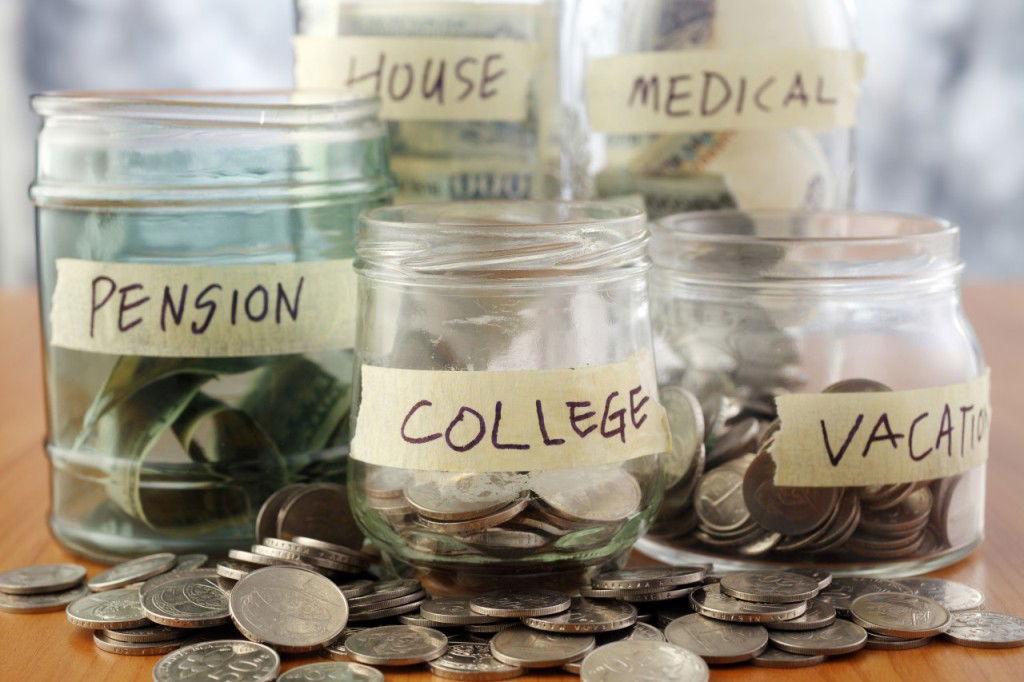Earning interest on your savings shouldn’t feel like a losing battle, but with traditional savings accounts offering rates as low as 0.01%, your money barely grows. High-yield savings accounts provide a better option, offering significantly higher interest rates while keeping your funds secure and accessible.

Whether you’re building an emergency fund or saving for a big purchase, a high-yield savings account can help you reach your goals faster. But not all accounts are created equal—fees, balance requirements, and fluctuating interest rates can impact your savings. Here’s what you need to know before opening one.
What is a high-yield savings account?
A high-yield savings account is a type of deposit account offered by financial institutions that pays a higher interest rate compared to a standard savings account. These accounts are attractive to savers because they can help grow your money faster through the power of compound interest.
High-yield savings accounts typically come with various features such as FDIC or NCUA insurance, online banking, and low or no monthly fees.
Our top picks: Best High-Yield Savings Accounts Online for 2025
How High-Yield Savings Accounts Differ from Traditional Savings Accounts
While both high-yield and traditional savings accounts serve the same purpose of providing a safe place to store your money while earning interest, there are some key differences.
A high-yield savings account offers higher interest rates than a traditional savings account, which means you can earn more interest over time. Additionally, high-yield accounts may have more online banking features and fewer fees than their traditional counterparts.
Pros & Cons of High-Yield Savings Accounts
High-yield savings accounts offer better interest rates than traditional savings accounts, helping your money grow faster. They also provide easy access to funds while keeping your savings secure. However, some accounts have fees, minimum balance requirements, and variable interest rates that can change over time.
Pros
- Higher interest rates: Earns more interest than a traditional savings account, allowing your money to grow faster.
- Compound interest: Interest compounds over time, meaning you earn interest on both your initial deposit and any accumulated interest.
- Easy access to funds: Most accounts allow withdrawals and transfers without penalties, making them a good option for emergency savings or short-term goals.
- Low or no fees: Many online banks offer accounts with no monthly fees, while some waive fees if you meet balance requirements.
- FDIC or NCUA insurance: Funds are typically insured up to $250,000 per account holder, per institution, by either the Federal Deposit Insurance Corporation (FDIC) or the National Credit Union Administration (NCUA).
Cons
- Rate chasing and account management: Interest rates fluctuate, leading some savers to frequently open and close accounts to secure the best rates, which can be time-consuming.
- Variable interest rates: The interest rate can change over time, depending on market conditions and Federal Reserve policies.
- Minimum balance requirements: Some banks require a minimum balance to open an account, earn the highest interest rate, or avoid fees.
- Potential fees and restrictions: While many accounts have no monthly fees, some may charge for excess withdrawals, paper statements, or other services. Federal regulations also limit savings account withdrawals to six per month.
- Limited in-person banking: Many high-yield savings accounts are offered by online banks, which may not have physical branches, making cash deposits or in-person services more difficult.
Alternatives to a High-Yield Savings Account
If you’re not sure whether a high-yield savings account is the right choice for you, consider these alternatives:
Money Market Accounts
A money market account is similar to a high-yield savings account. They offer competitive interest rates and FDIC or NCUA insurance. However, they may also come with additional features like check-writing capabilities and ATM access.
Certificates of Deposit (CDs)
CDs are time-based deposit accounts that offer higher interest rates in exchange for locking your funds away for a specified term. They can be a suitable option for those with specific savings goals and a known time horizon, but they may come with penalties for early withdrawal.
High-Yield Checking Accounts
High-yield checking accounts combine the features of checking accounts with the interest-earning potential of a high-yield savings account. They often offer competitive interest rates while allowing for easier access to funds and more transaction flexibility. Be sure to compare account fees and requirements when considering a high-yield checking account.
Investment Accounts
For those with a longer time horizon and a higher risk tolerance, investment accounts can offer the potential for higher returns than a high-yield savings account. Keep in mind that investments come with risks, and there’s no guarantee of returns.
Bonds and Bond Funds
Investing in bonds or bond funds can provide a relatively stable, low-risk way to earn interest on your savings. However, they may not offer the same level of liquidity as a high-yield savings account.
Paying Down High-Interest Debt
If you have high-interest debt, such as credit card balances or personal loans, using your extra funds to pay down this debt can save you more in interest charges than you would earn in a high-yield savings account.
How to Choose the Right High-Yield Savings Account
To find the best high-yield savings account for your needs, consider the following factors:
Compare Interest Rates
Look for accounts that offer competitive savings rates in comparison to the national average. Keep in mind that rates can change over time, so it’s essential to monitor your account’s annual percentage yield (APY) regularly.
Consider Fees and Account Features
Evaluate potential fees and account features, such as minimum balance requirements, withdrawal limits, and online and mobile banking capabilities. Choose an account that aligns with your financial needs and preferences.
Evaluate Reputation and Customer Service
Research the reputation of the financial institution offering the high-yield savings account. Read reviews and consider factors such as customer service, financial stability, and any past regulatory issues.
Consider Online vs. Brick-and-Mortar Options
Decide whether you prefer an online bank, a traditional brick-and-mortar bank, or a credit union. Online banks often offer higher interest rates and fewer fees, but they may have limited customer service and branch access.
5 Best High-Yield Savings Accounts
Finding the right high-yield savings account can make a significant difference in your savings growth. Here’s a list of seven top high-yield savings accounts that offer attractive savings rates and appealing features to help you make the most of your hard-earned money.
1. Upgrade Premier Savings
- APY of 4.02% on balances of $1,000 or more
- No monthly or annual fees
- Deposits insured by FDIC up to $1 million via Cross River Bank
- 24/7 mobile access for easy account management
- Online account setup
2. SoFi Checking and Savings
- Up to 3.80% APY on savings and 0.50% on checking
- No monthly fees
- $50 to $300 welcome bonus for qualifying direct deposits
- Access to 55,000+ fee-free ATMs worldwide
- Early direct deposit feature
3. LendingClub High-Yield Savings
- APY of 4.50% on your entire balance
- No minimum balance requirement
- No monthly service fees
- Free ATM card for account access
- Easy online account setup with a $100 minimum deposit
4. EverBank Performance Savings
- APY of 4.30%
- No minimum deposit requirement
- No hidden fees
- Free online statements, ACH transfers, and incoming wire transfers
- Mobile banking for deposits and account management
5. CIT Bank Platinum Savings
- APY of 4.10% on balances of $5,000 or more
- $100 minimum deposit to open
- No monthly maintenance fees
- Mobile app with check deposit and transfer tools
- FDIC insured up to $250,000 per depositor
Final Thoughts
A high-yield savings account can help you grow your savings faster while keeping your money secure and accessible. With competitive interest rates and minimal fees, these accounts work well for emergency funds, short-term savings, and financial goals that require liquidity. However, fluctuating interest rates and withdrawal limits may be drawbacks for some savers.
Before opening an account, compare interest rates, fees, and account features to find the best fit for your needs. If a high-yield savings account doesn’t align with your goals, alternatives like money market accounts, CDs, or investment options may be worth exploring. Taking the time to choose the right savings strategy can help you make the most of your money.








